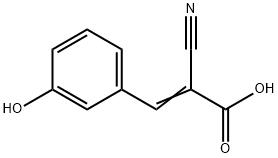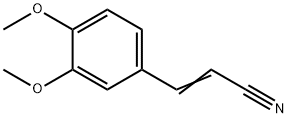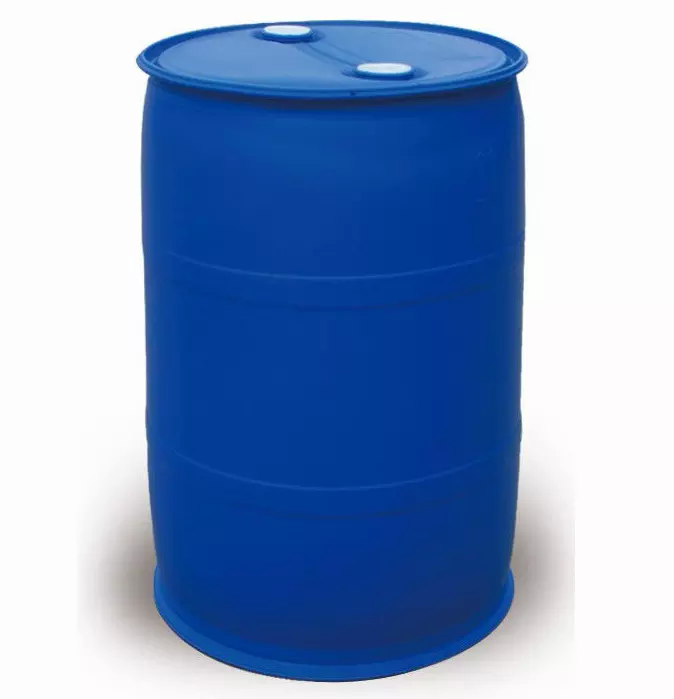Acrylonitrile
Synonym(s):Acrylic acid nitrile, Vinyl cyanide;Acrylonitrile;Vinyl cyanide
- CAS NO.:107-13-1
- Empirical Formula: C3H3N
- Molecular Weight: 53.06
- MDL number: MFCD00001927
- EINECS: 203-466-5
- SAFETY DATA SHEET (SDS)
- Update Date: 2025-01-27 09:38:02

What is Acrylonitrile?
Chemical properties
Acrylonitrile is a colorless, flammable liquid. Its vapors may explode when exposed to an open flame. Acrylonitrile does not occur naturally. It is produced in very large amounts by several chemical industries in the United States and its requirement and demand has increased in recent years. The largest users of acrylonitrile are chemical industries that make acrylic and modacrylic fi bers, high impact acrylonitrile-butadiene-styrene (ABS) plastics. Acrylonitrile is also used in business machines, luggage, and construction material, in the manufacturing of styrene-acrylonitrile (SAN) plastics for automotive and household goods, and in packaging material. Adiponitrile is used to make nylon, dyes, drugs, and pesticides.
The Uses of Acrylonitrile
Acrylonitrile is used in the production of acrylic fibers, resins, and surface coating; as an intermediate in the production of pharmaceuticals and dyes; as a polymer modifier; and as a fumigant. It may occur in fire-effluent gases because of pyrolyses of polyacrylonitrile materials. Acrylonitrile was found to be released from the acrylonitrile–styrene copolymer and acrylonitrile–styrene–butadiene copolymer bottles when these bottles were filled with food-simulating solvents such as water, 4% acetic acid, 20% ethanol, and heptane and stored for 10 days to 5 months (Nakazawa et al. 1984). The release was greater with increasing temperature and was attributable to the residual acrylonitrile monomer in the polymeric materials.
What are the applications of Application
Acrylonitrile is used in the manufacture of resins
Definition
ChEBI: Acrylonitrile is a nitrile that is hydrogen cyanide in which the hydrogen has been replaced by an ethenyl group. It is very toxic and irritant but is also a sensitizer. It caused both irritant and allergic contact dermatitis in a production manufacture.
Production Methods
Acrylonitrile is produced in commercial quantities almost exclusively by the vapor-phase catalytic propylene ammoxidation process developed by Sohio.
C3H6 + NH3 + 2/3O2→ C3H3N +3H2O
The one-step, fluid bed Acrylonitrile manufacturing process was developed by scientists of The Standard Oil Company (Sohio), one of INEOS's predecessors in the U.S. in the 1950s. Today, over 95 percent of the world's Acrylonitrile is manufactured using INEOS's exclusive technology.
Air & Water Reactions
Highly flammable. Soluble in water.
Reactivity Profile
ACRYLONITRILE produces poisonous hydrogen cyanide gas on contact with strong acids or when heated to decomposition. Reacts violently with strong oxidizing agents (dibenzoyl peroxide, di-tert-butylperoxide, bromine) [Sax, 9th ed., p. 61]. Rapidly ignites in air and forms explosive mixtures with air. Polymerizes violently in the presence of strong bases or acids. Underwent a runaway reaction culminating in an explosion on contact with a small amount of bromine or solid silver nitrate [Bretherick, 5th ed., 1995, p. 404].
Health Hazard
Acrylonitrile is a highly toxic compound, an irritant to the eyes and skin, mutagenic, teratogenic, and causes cancer in test animals.
Acrylonitrile is a moderate to severe acute toxicant via inhalation, oral intake, dermal absorption, and skin contact. Inhalation of this compound can cause asphyxia and headache. Firefighters exposed to acrylonitrile have reported chest pains, headache, shortness of breath, lightheadedness, coughing, and peeling of skin from their lips and hands (Donohue 1983). These symptoms were manifested a few hours after exposure and persisted for a few days. Inhalation of 110 ppm for 4 hours was lethal to dogs. In humans, inhalation of about 500 ppm for an hour could be dangerous. The toxicity symptoms in humans from inhaling high concentrations of acrylonitrile were somnolence, diarrhea, nausea, and vomiting (ACGIH 1986).
Flammability and Explosibility
Not classified
Contact allergens
Acrylonitrile is a raw material used extensively in industry, mainly for acrylic and modacrylic fibers, acrylonitrile-butadiene-styrene and styrene-acrylonitrile resins, adiponitrile used in nylon’s synthesis, for nitrile rubber, and plastics. It is also used as an insecticide. This very toxic and irritant substance is also a sensitizer and caused both irritant and allergic contact dermatitis in a production manufacturer.
Biochem/physiol Actions
An industrial carcinogen that is a multisite carcinogen in rats and possibly carcinogenic to humans.
Potential Exposure
Acrylonitrile is used in the manufacture of synthetic fibers, polymers, acrylostyrene plastics, acrylonitrile butadiene styrene plastics, nitrile rubbers, chemicals, and adhesives. It is also used as a pesticide. In the past, this chemical was used as a room fumigant and pediculicide (an agent used to destroy lice).
Carcinogenicity
Acrylonitrile is reasonably anticipated to be a human carcinogenbased on sufficient evidence of carcinogenicity from studies in experimental animals.
storage
Work with acrylonitrile should be conducted in a fume hood to prevent exposure by inhalation, and splash goggles and impermeable gloves should be worn at all times to prevent eye and skin contact. Acrylonitrile should be used only in areas free of ignition sources. Containers of acrylonitrile should be stored in secondary containers in the dark in areas separate from oxidizers and bases.
Shipping
UN1093 Acrylonitrile, stabilized, Hazard Class 3; Labels: 3 Flammable liquids, 6.1-Poisonous materials
Purification Methods
Wash acrylonitrile with dilute H2SO4 or dilute H3PO4, then with dilute Na2CO3 and water. Dry it with Na2SO4, CaCl2 or (better) by shaking with molecular sieves. Fractionally distil it under N2. It can be stabilised by adding 10ppm tert-butyl catechol. Immediately before use, the stabilizer can be removed by passage through a column of activated alumina (or by washing with 1% NaOH solution if traces of water are permissible in the final material), followed by distillation. Alternatively, shake it with 10% (w/v) NaOH to extract inhibitor, and then wash it in turn with 10% H2SO4, 20% Na2CO3 and distilled water. Dry for 24hours over CaCl2 and fractionally distil under N2 taking fraction boiling at 75.0-75.5oC (at 734mm). Store it with 10ppm tert-butyl catechol. Acrylonitrile is distilled off when required. [Burton et al. J Chem Soc, Faraday Trans 1 75 1050 1979, Beilstein 2 IV 1473.]
Environmental Fate
Acrylonitrile is both readily volatile in air and highly soluble in water. These characteristics determine the behavior of acrylonitrile in the environment. The principal pathway leading to the degradation of acrylonitrile in air is photooxidation, mainly by reaction with hydroxyl radicals (OH). Acrylonitrile may also be oxidized by other atmospheric components such as ozone and oxygen. Very little is known about the nonbiologically mediated transformation of acrylonitrile in water. It is oxidized by strong oxidants such as chlorine used to disinfect water. Acrylonitrile is readily degraded by aerobic microorganisms in water.
Incompatibilities
Acrylonitrile is reactive with, and must be kept away from, strong oxidizers, especially bromine. Use extreme care to keep Acrylonitrile away from strong bases, strong acids, copper, copper alloys, ammonia and amines. Contact with these chemicals can cause a chemical reaction resulting in a fire or explosion. Chemical compatibility should also be determined before Acrylonitrile comes in contact with any other chemical.
Waste Disposal
Consult with environmental regulatory agencies for guidance on acceptable disposal practices. Generators of waste containing this contaminant (≥100 kg/mo) must conform with EPA regulations governing storage, transportation, treatment, and waste disposal. Incineration with provision for nitrogen oxides removal from effluent gases by scrubbers or afterburners. A chemical disposal method has also been suggested involving treatment with alcoholic NaOH; the alcohol is evaporatedand calcium hypochlorite added; after 24 hours the product is flushed to the sewer with large volumes of water. Recovery of acrylonitrile from acrylonitrile process effluents is an alternative to disposal.
Properties of Acrylonitrile
| Melting point: | -83 °C (lit.) |
| Boiling point: | 77 °C (lit.) |
| Density | 0.806 g/mL at 20 °C |
| vapor density | 1.83 (vs air) |
| vapor pressure | 86 mm Hg ( 20 °C) |
| refractive index | n |
| Flash point: | 32 °F |
| storage temp. | 2-8°C |
| solubility | 73g/l |
| form | Liquid |
| color | Clear |
| Odor | Mild pyridine-like odor at 2 to 22 ppm |
| PH | 6.0-7.5 (50g/l, H2O, 20℃) |
| explosive limit | 2.8-28%(V) |
| Odor Threshold | 8.8ppm |
| Water Solubility | Soluble. 7.45 g/100 mL |
| Sensitive | Light Sensitive |
| Merck | 14,131 |
| BRN | 605310 |
| Henry's Law Constant | 1.30 at 30.00 °C (headspace-GC, Hovorka et al., 2002) |
| Exposure limits | NIOSH REL: TWA 1 ppm, 15-min C 1 ppm, IDLH 85 ppm; OSHA
PEL: TWA 2 ppm, 15-min C 10 ppm; ACGIH TLV: TWA 2 ppm. |
| Dielectric constant | 33.009999999999998 |
| CAS DataBase Reference | 107-13-1(CAS DataBase Reference) |
| IARC | 2B (Vol. 71) 1999 |
| NIST Chemistry Reference | 2-Propenenitrile(107-13-1) |
| EPA Substance Registry System | Acrylonitrile (107-13-1) |
Safety information for Acrylonitrile
| Signal word | Danger |
| Pictogram(s) |
 Flame Flammables GHS02  Corrosion Corrosives GHS05  Skull and Crossbones Acute Toxicity GHS06  Health Hazard GHS08  Environment GHS09 |
| GHS Hazard Statements |
H225:Flammable liquids H315:Skin corrosion/irritation H317:Sensitisation, Skin H318:Serious eye damage/eye irritation H335:Specific target organ toxicity, single exposure;Respiratory tract irritation H350:Carcinogenicity H411:Hazardous to the aquatic environment, long-term hazard |
| Precautionary Statement Codes |
P210:Keep away from heat/sparks/open flames/hot surfaces. — No smoking. P273:Avoid release to the environment. P280:Wear protective gloves/protective clothing/eye protection/face protection. P301+P310:IF SWALLOWED: Immediately call a POISON CENTER or doctor/physician. P303+P361+P353:IF ON SKIN (or hair): Remove/Take off Immediately all contaminated clothing. Rinse SKIN with water/shower. P305+P351+P338:IF IN EYES: Rinse cautiously with water for several minutes. Remove contact lenses, if present and easy to do. Continuerinsing. |
Computed Descriptors for Acrylonitrile
Acrylonitrile manufacturer
Ishwar Chemicals and Gases
New Products
Methyl (R)-1-Boc-4,4-difluoropyrrolidine-2-carboxylate 2,2-Difluoropropylamine hydrochloride tert-butyl 3-bromoazetidine-1-carboxylate (R)-1-Boc-3-hydroxypyrrolidine DIFLUOROACETIC ANHYDRIDE 2,2-Difluoropropionic acid Diallylamine, 99% Calcium hydroxide, 95% Aluminum oxide, basic 2-Bromophenylacetonitrile, 97% L-tert-Leucine,97% N-Hydroxy-2-methylpropanimidamide 4-(3,4-Dichlorophenyl)-3,4-Dihydro-N-Methyl-1-(2H)-Naphthalenimine (Schiff Base) 2-AMINO-3,5-DIBROMO BENZALDEHYDE [ADBA] L-Glutamic Acid Dimethyl Ester Hcl 10-Methoxy-5H-dibenz[b,f]azepine 5-Cyanophthalide N, N-Carbonyldiimidazole (CDI) Dibenzoyl Peroxide Titanium Dioxide 2-(Methylthio) Benzonitrile Sodium Acetate Anhydrous Allopurinol 1,5-DibromopentaneRelated products of tetrahydrofuran








You may like
-
 ACRYLONITRILE 99%View Details
ACRYLONITRILE 99%View Details -
 Acrylonitrile CAS 107-13-1View Details
Acrylonitrile CAS 107-13-1View Details
107-13-1 -
 Acrylonitrile (Stabilized) pure CAS 107-13-1View Details
Acrylonitrile (Stabilized) pure CAS 107-13-1View Details
107-13-1 -
 Acrylonitrile (stabilised) 99% CAS 107-13-1View Details
Acrylonitrile (stabilised) 99% CAS 107-13-1View Details
107-13-1 -
 Acrylonitrile, GR 99%+ CAS 107-13-1View Details
Acrylonitrile, GR 99%+ CAS 107-13-1View Details
107-13-1 -
 Acrylonitrile CAS 107-13-1View Details
Acrylonitrile CAS 107-13-1View Details
107-13-1 -
 Acrylonitrile contains 35-45 ppm MEHQ as inhibitor 99% CAS 107-13-1View Details
Acrylonitrile contains 35-45 ppm MEHQ as inhibitor 99% CAS 107-13-1View Details
107-13-1 -
 Acrylonitrile Butadiene Styrene Chemical CAS 107-13-1View Details
Acrylonitrile Butadiene Styrene Chemical CAS 107-13-1View Details
107-13-1
